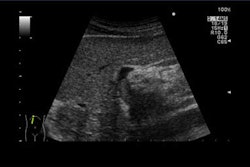
Editor's note: The second part of our profile of the Clalit organization contains practical advice on how to achieve success with digital systems. To read the first part of our series focusing on how PACS is bringing important clinical gains, click here.
A patient-centered approach and a smarter way to use resources was at the heart of Clalit's decision to create a multisite, multidomain PACS, according Dr. Ziv Rosenbaum, director of medical technology at Clalit Health Services.
"We wanted a shared image file for each patient in our organization, no matter where the study was performed. We also wanted to enable the referring physician to use the same system for viewing radiology, as well as obstetric ultrasound studies, for example," he said.
 Quantitative measures will help prove how meaningfully an enterprise-wide PACS is being used, according to Dr. Ziv Rosenbaum.
Quantitative measures will help prove how meaningfully an enterprise-wide PACS is being used, according to Dr. Ziv Rosenbaum.
Economics also played a role in the decision, and Rosenbaum points out that it is cheaper to purchase a single solution rather than many different solutions for the various domains involved. He urges radiologists and PACS managers to follow his 10 pointers for optimal PACS deployment.
"First, don't aim for a solution to fit radiology only, but for a solution to fit the imaging needs of the entire institution, including obstetrics, cardiology, eye care, medical photography, gastroenterology, to name but a few of the domains that acquire image data and send interpretations to a referring physician. The system should be multidomain," he commented.
The second rule is to use PACS to shift toward an enterprise-level workflow. Issues such as preauthorization, protocol setting, prioritization, interpretation, can be addressed at an organizational level through, for example, shared worklists.
The third recommendation is to make the project part of the organization's strategic plan and the focus of top management.
"It can't be a low-level project. Without the understanding of the CEOs and CFOs, the project may suffer from a lack of resources," he said.
The need to perform a detailed study of various solutions with vendors in a request for information process features fourth on the checklist.
"Take time to do this -- don't go directly to a request for proposal (RFP) process. Vendors will help you understand what is relevant to the organization and what is not," he said.
The fifth rule is to make a detailed RFP document setting out the elements of a preferred solution. Inclusion of a staff training plan is vital, according to Rosenbaum.
"At Clalit, we specified that we wanted our staff to be able to use the system independently a short time after implementation," he said. "Training needs to be divided into initial training and ongoing follow-up learning. The commitment of facility managers to allow staff time off from normal schedules to complete this training is crucial for success."
Sixth, the RFP document should include a chapter on postinstallation R&D.
"PACS is a shifting target. There is no 'on-the-shelf' solution to cover all the needs of a large institution. Make sure you handle your future needs through collaboration with the vendor," he noted.
The seventh pointer is careful evaluation of the quality and price of each proposal. This usually requires the time and effort of a dedicated committee.
Clalit's large-scoped project involved 12 hospitals and 40 imaging centers. To implement PACS in such a short time required a central steering committee and a central management team, in addition to local management teams for each center, plus a collaborative exchange between each party. Establishing an organizational management structure is thus Rosenbaum's pointer number eight.
Ninth on the list is deciding on quantitative measures to ensure that the project is running the way it should and helping to promote an enterprise-level image management system.
"Knowing what percentage of CT imaging reports contain marked key images that can be read across the entire organization and how many teaching files each radiologist adds in a week tells us how well and how meaningfully the system is being used," Rosenbaum said.
The 10th rule is to "manage the change": Users may perceive change as jeopardizing the four C's of comfort, control, confidence, or competence.
"They might fear from additional transparency (control), or not be happy with the system's quality (confidence). Users may worry that marking key images will take too much time (comfort), or that their skills are not sufficient to master the new system (competence)," he explained.
Whatever case applies, the goals of the system should be clearly explained, advised Rosenbaum, who sees an advantage in, for example, underlining the improved communication between the imaging expert and the referring physician.
Another benefit specific to the imaging specialist is that by marking key images, reports will become more "readable" and the comparative analysis in follow-up will be easier.
"You will get support and resistance," Rosenbaum concluded. "Identify the resistance and understand its causes to better handle it," he said.



















